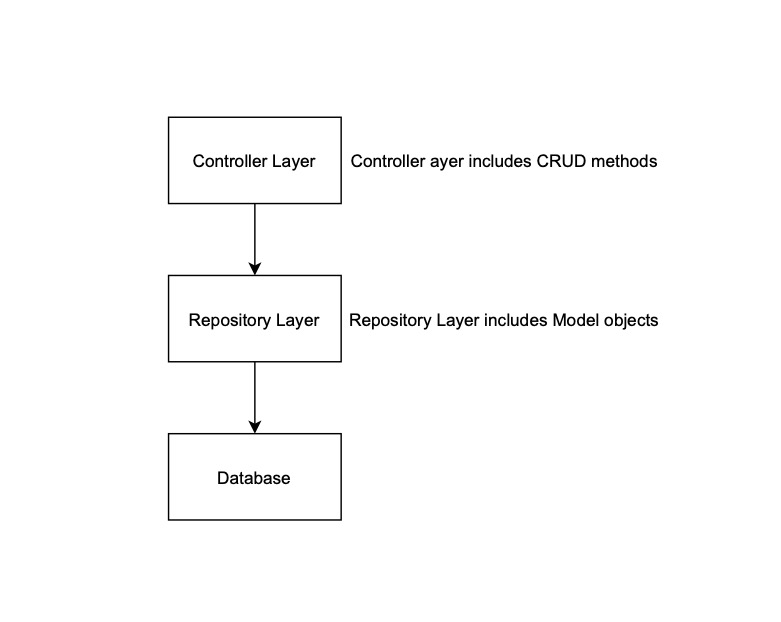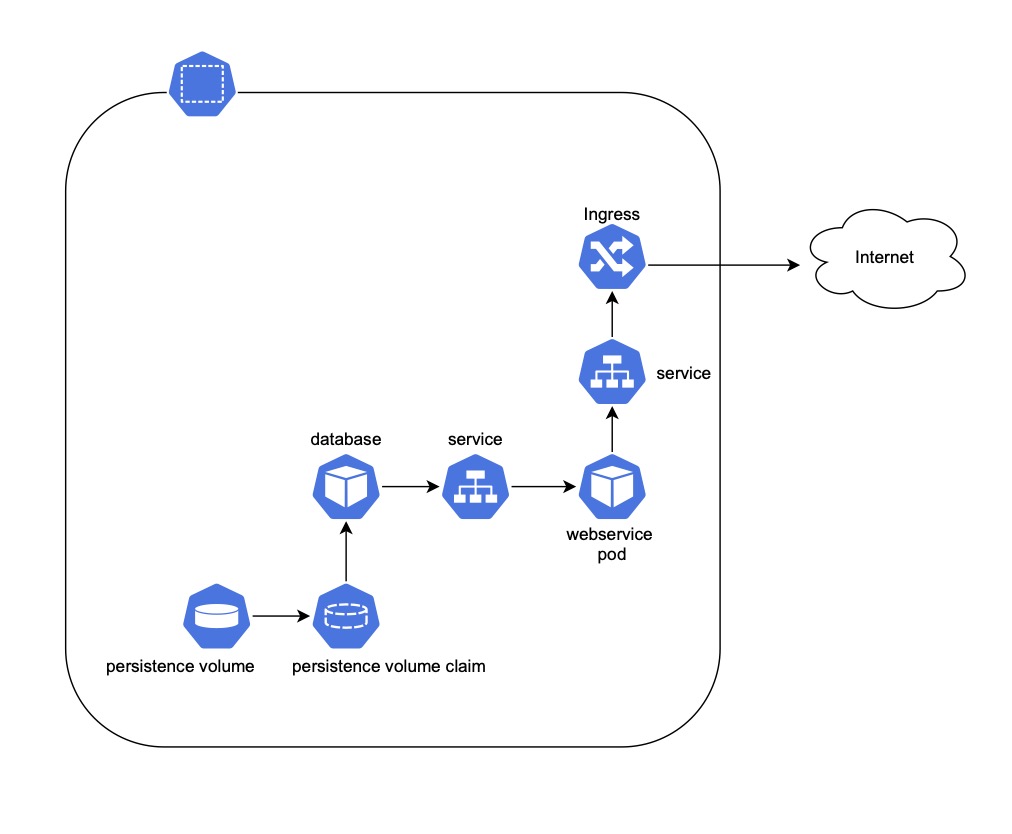--
Messages app exposes CRUD operation for message resource of type string (min_length=1 and max_length=255)
The following is the list of apis:
| API | Desscription |
|---|---|
| [GET] /api/v1/messages | Get a list of messages |
| [GET] /api/v1/messages/{id} | Get a message by id |
| [POST] /api/v1/messages | Create a message |
| [PUT] /api/v1/messages/{id} | Update a message |
| [DELETE] /api/v1/messages/{id} | Delete a message |
You can also access a more detailed list of available APIs by visiting /api/v1/docs/ url after the application is deployed.
messages webservice app consists of two layers: controller layer and repository layer.
- controller layer contains the logic related to CRUD operations on message resource and error handling. This layer is represented as api folder.
- repository layer contains of message data model and its properties. This layer is represented as models.py file.
The following provides more details about the directory structure of the messages app:
├── resources
│ └── images
├── Dockerfile
├── README.md
├── skaffold.yaml
├── wsgi.py
├── app
│ ├── config.py
│ ├── __init__.py
│ ├── models.py
│ ├── main
│ ├── api
│ └── exceptions.py
├── tests
│ ├── ...
├── entrypoint.sh
├── migrations
│ ├── ...
├── requirements.txt
└── helm
├── ...
Files:
- wsgi.py: is the entry to run the application. We are using unicorn http server which is a wsgi compliant http server
- skaffold.yaml: includes configuration for skafold to deploy the app in k8s local cluster
- requirements.txt: includes projct dependencies
Directories:
- resources: includes images used in README.md file
- app: contains api related logic for message resource
- tests: contains unit tests
- migrations: contains migration scripts generated by flask_migration lib
- helm: contains helm delpyment templatess
Architecture overview
The easiest way to build and deploy the messages app is to build and run it as a standalone docker container. In this mode, for simplicity, I am using an sqlite database for persistence.
To use Mysql database for persistence, you can deploy the messages app using helm. For the purpose of this demo, I am using minikube as local kubernetes.
Please refer to Perequisites section to prepare your local enviroment before deployment of the app.
There are three options to build and deploy messages app locally
-
Standalone
To build and deploy the app as a standalone docker container:docker build -t messages-webservice:latest .
Note:.means you are ruuning this command at the root directory of the projectdocker run --rm --env ENV_NAME=DEV -p 80:80 -it messages-webservice:latest
-
k8s with helm and skaffold
To build and deploy the app in minikub cluster using skaffold to run helm charts:skaffold run
-
k8s with helm
To build and deploy the app in minikub cluster using helm:docker build -t messages-webservice:latest .helm repo add bitnami https://charts.bitnami.com/bitnamihelm install db bitnami/mysql --set auth.rootPassword=passwordroot --version 8.5.0 -f <path_to_project_root>/messages/helm/db/values.yaml --kube-context minikubehelm install mw <path_to_project_root>/messages/helm/messages -f <path_to_project_root>/messages/helm/messages/values.yaml --kube-context minikube
The first perequisite, no matter which of above-mentioned options you chose for your depmloyment is that you run Docker on your local enviroment. Please follow this link to setup Docker if you don't have it already https://www.docker.com/get-started
If you are building and deploying the messages app as a standalone docker container, no further setup is required. In this mode, for simplicity, sqlite databse is used to store the message.
If you are building and deploying the messages app in local k8s with Mysql database, follow the following steps:
-
Install minikube https://minikube.sigs.k8s.io/docs/start/
If you are osx user, runbrew install minikubeFollow these steps after minikube is installed :- Run
minikube start - Run
minikube addons enable ingress - Append the following line (messages app hostname) to your hosts file
/etc/hosts
<minikube_ip> messages-webservice
replace<minikube_ip>with minikube VM IP and to get minikube IP run:minikube ip
- Run
-
Install helm https://helm.sh/docs/intro/quickstart/
If you are osx user, runbrew install helm -
If you want to use skaffold to run helm charts, install skaffold https://skaffold.dev/docs/install/
If you are osx user, runbrew install skaffold
k8s deployment overview
To run unit tests, follow the these steps:
- Build docker images by running the following command at the root path of the messages app:
docker build -t messages-webservice:latest .
- Run the tests:
docker run messages-webservice:latest python -m pytest -v tests -x
These assumtions are made to determine if a message is palindrome:
- message is a string
- message should contain only alphanumeric character
- leading and trailing whitespaces are consided as part of message
- the operation is not case sensitive

